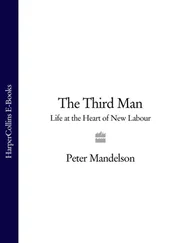Tony Blair checks his tabulated answers for a few minutes under the stern oil-painted eyes of Sir Walter Scott. He rejects the copy of Le Monde. The offending page falls down onto the pink carpet and stays there, propped against the golden gothic dragons on the wall.
Outside in David Hanson’s office, which for these few minutes each week is like ‘feed the animals day’ at a zoo, there is a Junior Whips’ convention. These are the ambitious young MPs whose routine job is to ensure that Labour MPs vote Labour. They want to catch the boss’s eye with their imagination, devotion and skill.
They are swapping names about which doubters are likely to vote for the war (‘He had a meeting with Cherie the other day which was very helpful’) and which will definitely be against them (‘He’s a runner; you can tell it in his face’). There are fashion edicts: ‘Never trust a man in a pinstripe suit if the white stripe is thicker than the blue one.’ There is coded abuse: ‘That man’s a woodentop – and that’s a Whips’ Office technical term.’
The Americans are said to be abandoning their efforts at the UN. Is there a phone for calling the White House? The question is posed by Campbell, but is not answered. These secure phones are called ‘Brents’, and have operators who seem normally to be scrabbling on the floor for the right socket. There is not a ‘Brent’ here.
‘Don’t eat that,’ Morgan tells the horde around her, pointing to a bruised and not very appetising banana. ‘It’s his lunch.’
The Prime Minister and his personal spy sweep out, and into the Chamber. There is just a minute to spare before the Speaker calls for the first Labour MP to question ‘US pressure for precipitate action against Iraq’.
The Conservative leader Iain Duncan Smith asks all his questions about Iraq, but not the one which Tony Blair fears. He does ask about Donald Rumsfeld and Clare Short, as predicted. The noise from the Labour benches is not of loyal hoorahs; but there are no boos either. The big parliamentary day is not yet come. There are questions too about lost jobs in farming and lost education in Leicestershire, each of which gets a neat tabbed reply from the file.
Back in his room, Tony Blair begins his lunch, feet on the table, eyes on the whisky bottles and birthday cards which he signs for MPs at this time every week. Once every ‘Best wishes, Tony’ is done he turns to the letters to world leaders. The knights of Downing Street think that extra reassurance to large Islamic nations like Pakistan and Indonesia might be wise.
‘Dear Pervez …’ says the Prime Minister, as his pen glides along the top of a letter. ‘I’m never quite sure what name to use to Muslims,’ he says, looking up at his staff and down dubiously at his handiwork so far.
‘“Dear General” normally goes down well,’ says a voice from behind. Tony Blair keeps doggedly signing.
Campbell has some urgent pager messages. ‘Who was the first black footballer to play for England?’ he asks. The name of Viv Anderson is offered from the room outside.
‘John Toshack,’ says Morgan, not prepared to be left behind on a macho quiz afternoon.
‘He wasn’t black; he was Welsh,’ says Campbell with scorn.
‘There are lots of black Welsh people,’ says Morgan, moving onto the safer territory of what is politically correct.
Tony Blair has finished his signings but not the blacker bits of his banana. He is to stay in the Commons till it is time for today’s call from the den to President Bush at 3.15 p.m.
‘Don’t be late,’ says Powell as the team returns to the people-carrier. The driver takes one of the more circuitous security-approved routes back to Downing Street, giving a tourist ride around a selection of London statues that are boarded up to protect them from anti-war protesters. ‘I wonder where we’re going to put the statue of Donald Rumsfeld,’ jokes the cheery Chief of Staff.
In the evening Tony Blair is to have dinner with the German Chancellor Gerhard Schröder. To the relief of the team’s junior members, whose lives are regularly tormented by instructions to find the finest Indian restaurant, the perfect country pub, the best riverside table at which Prime Minister and foreign guest can just ‘drop in’, the meal will be in Downing Street.
Now is not the time for long, relaxing public appearances. Tony Blair does not have his country with him. The German Chancellor, with votes in mind, has declared himself against the British and American stance. But British protesters might not know that.
First the two leaders visit the Royal Academy’s exhibition of ‘Masterpieces from Dresden’, paintings by Canaletto, Dürer and Velasquez which survived both the British firebombing of 1945 and the flooding of the Elbe eight months ago. This gives Schröder a chance to make generalisations about the international message of art, the President of Saxony to praise Saxony, the sponsor to praise himself, and museum curators the opportunity to hope that the art treasures of Baghdad are equally successfully protected.
Tony and Cherie Blair stand together, holding hands, listening to the speeches and looking at Tiepolo’s Vision of St Anne. When it is his turn to speak, he says that this is the best part of his day. No one doubts him.
Morning headlines … Tony Blair gives six tests for Saddam Hussein … Washington threatens Moscow with consequences of veto … Tony Blair denies that British place in war depends on new UN resolution …
‘It’s Cabinet time,’ says a voice from the diplomatic knights’ zone.
‘Oh, yes,’ comes the unenthusiastic response.
The arrival of some twenty-five men and women from various government departments, however regular on a Thursday morning, is not welcomed with joy at Number Ten. Cabinet days are like Christmas at a great country house, when all the relatives who think they own the place – who do in certain circumstances own the place – descend for their share of the inheritance. The master and his servants greet the guests cheerfully enough; they can hardly turn them away, but they are mightily pleased when they are gone.
If the Secretaries of State want to make a visible entrance (which mostly they do) they are driven up to the front door, get out of their car with just a slight turn of the head to see if a TV reporter might ask them a question, and go in past the policeman. It then takes just a few seconds to walk straight ahead, past the Henry Moore and three small paintings of rural scenes, and into the back hall where the early arrivals will already be drinking coffee.
Most of the decoration in this corridor is exactly what you would expect in a prosperous house inhabited by people who do not care too much for art. But there is one stark picture, of a cottage freshly blasted as though by some clean, bright light. The roof is off and the walls are smashed, but none of the wood is charred. It is dated 1940, but there is no name-plate for its artist. Sometimes visitors give this painting more than a single look.
The shy, the about-to-be sacked or anyone who happens to be in the neighbouring office on Whitehall can enter from a side door, past the office of Jonathan Powell and the Duty Clerks. Gordon Brown, the second most powerful man in the country, comes to Cabinet from the other side, along the corridor from Number Eleven that he shares with Alastair Campbell, into the front hall, left turn and down to his colleagues.
The Chancellor of the Exchequer seems cheerful, almost jolly this morning. But no one here would make much of that. His relationship with Tony Blair is one of Downing Street’s greatest mysteries. The team knows that today he will go out and talk to TV and radio and support the Prime Minister. How this was agreed they do not know.
Читать дальше












